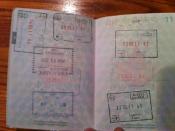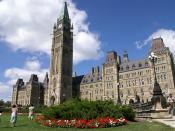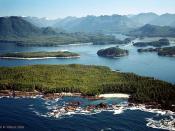Six thousand years ago, natives settled in the Saint Lawrence River Valley. By the 1500's, different groups of natives lived there. The English and French have long histories with Quebec. Cartier, a Frenchman, explored Quebec and the Saint Lawrence Region in 1535. In 1608, another Frenchman, Champlain, founded the first permanent French settlement and trading post, calling it Quebec.
The English army, in 1628, attacked Quebec and captured the settlement in 1629. In 1632, France regained Quebec. In 1759, Quebec came into British hands. The Treaty of Paris, in1763, gave Quebec to the British. From 1763 to 1791 Quebec was the capital of the British Government in Quebec. From 1791 to 1841, Quebec was the capital of Lower Canada. 1n 1774 the Quebec Act was passed by England. It guaranteed French civil law in Quebec, a British colony with a largely French population. From 1861 Quebec has been a province.
Quebec is located at the junction of the Saint Lawrence River and the Saint Charles River. It is on the northern headland of the Saint Lawrence River. There are two parts to Quebec- the Upper Town and the Lower Town. The Lower Town is the commercial section, the businesses and industries are located here. It has many large stores and some factories. The Notre Dame des Victoires Church, built in 1688, is on the site of Champlain's first settlement. The Upper Town is the residential section. Most of the churches, public building s, stores, restaurants, parks, private schools and homes are there. Narrow stairs, an elevator and a steep winding street connect the upper and lower sections of Quebec.
At 333 feet above river level, Cape Diamond is the highest point in Quebec. A fort was built there from 1823 to 1832. Southwest of the fort is National...


